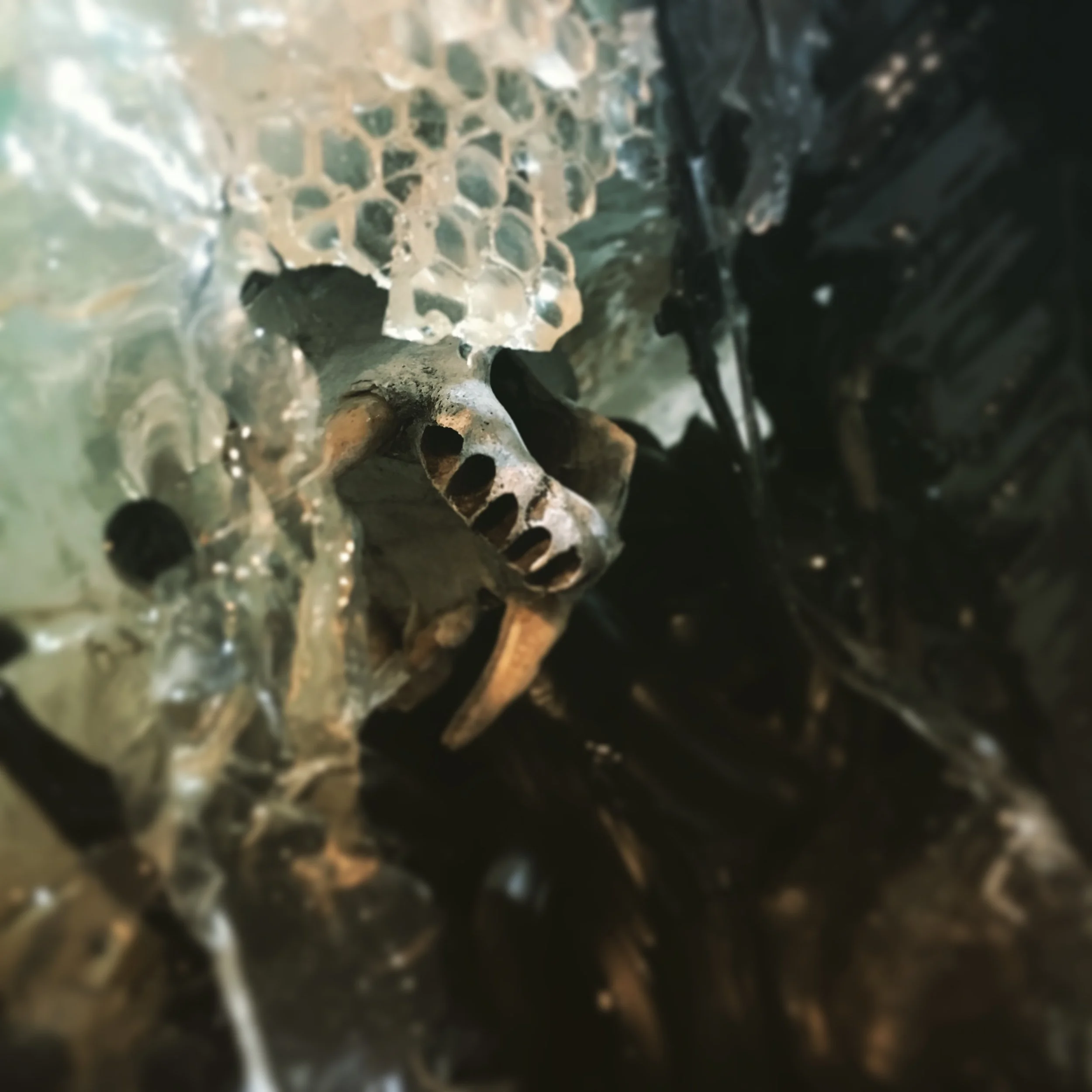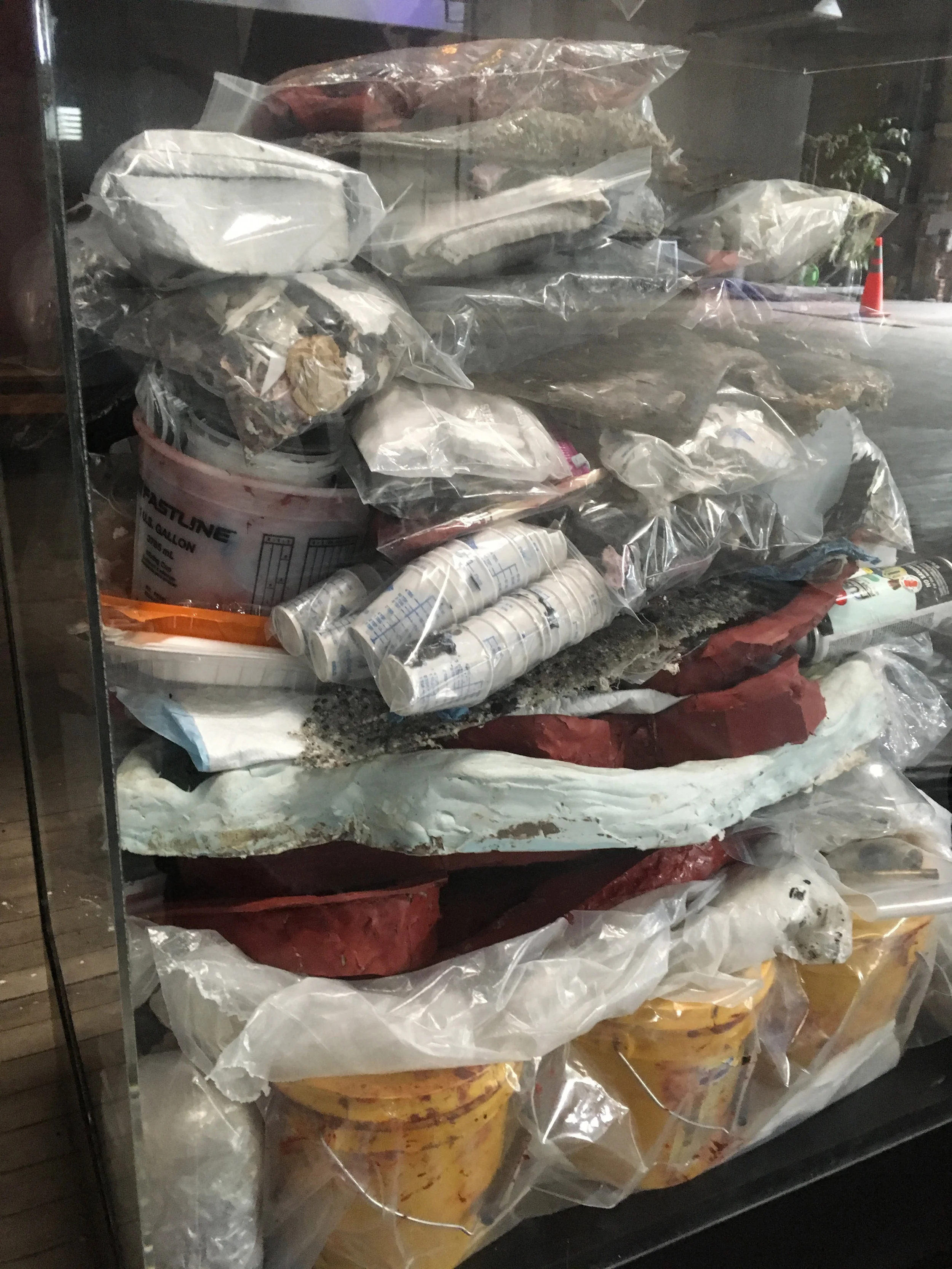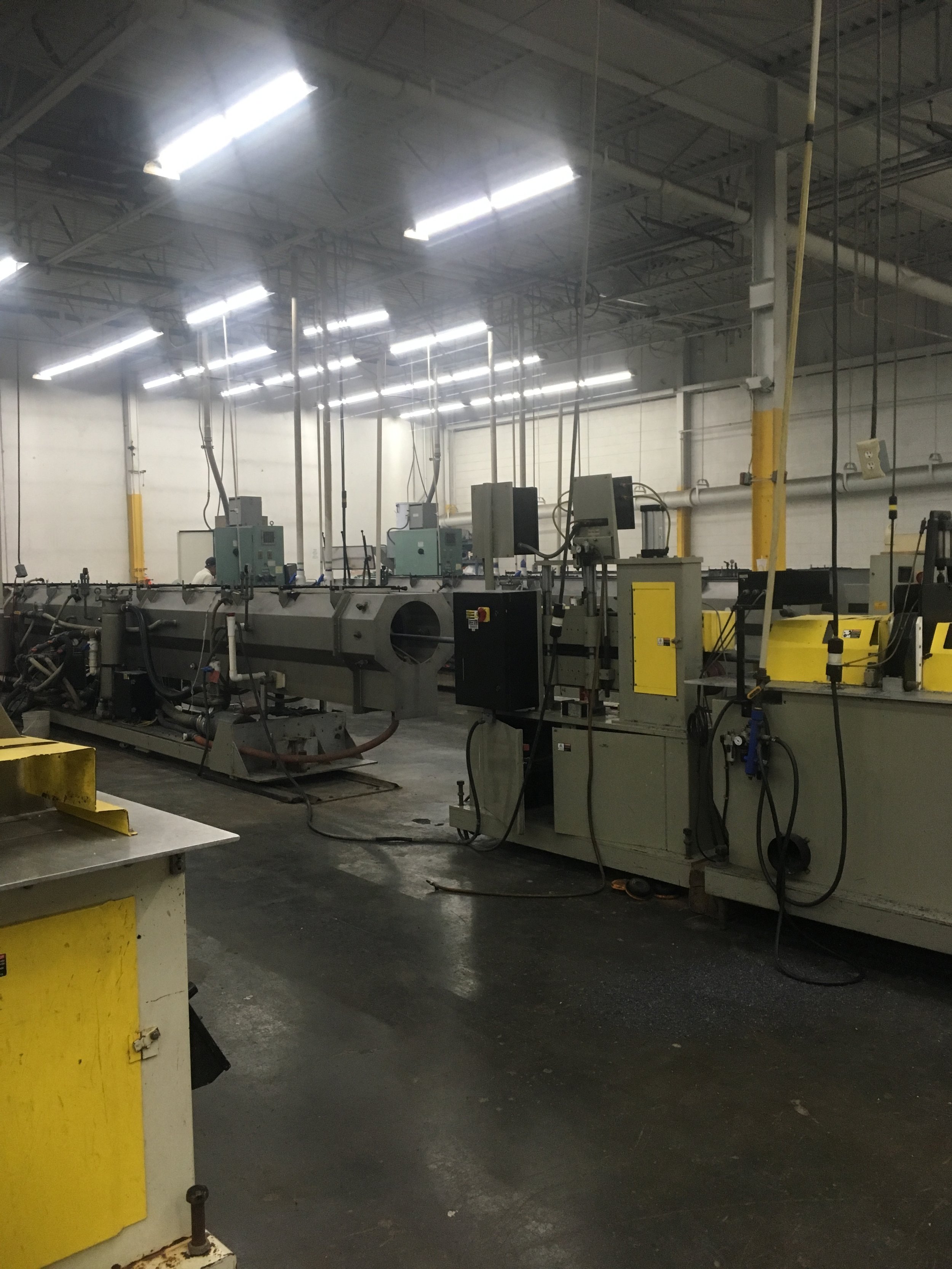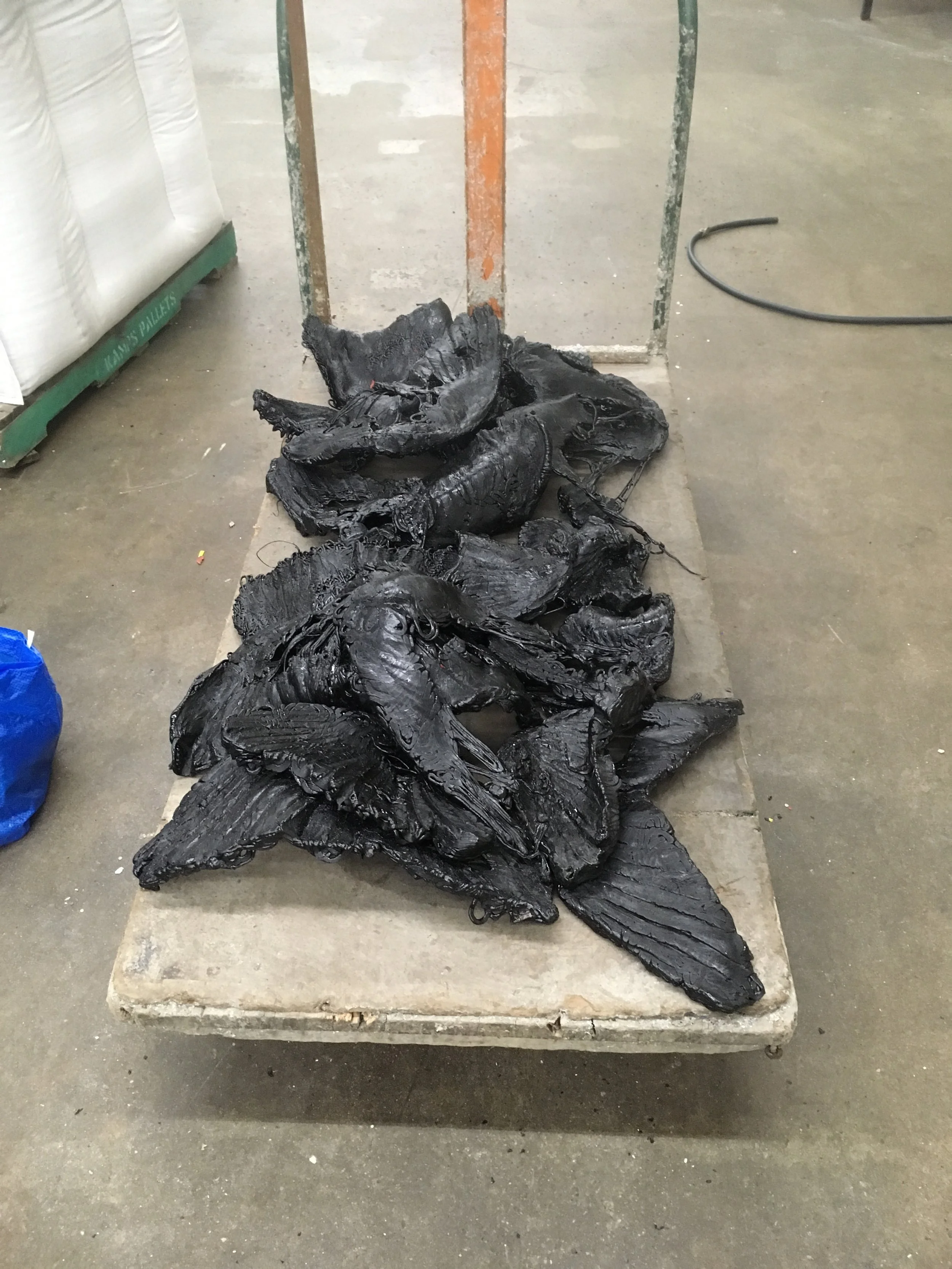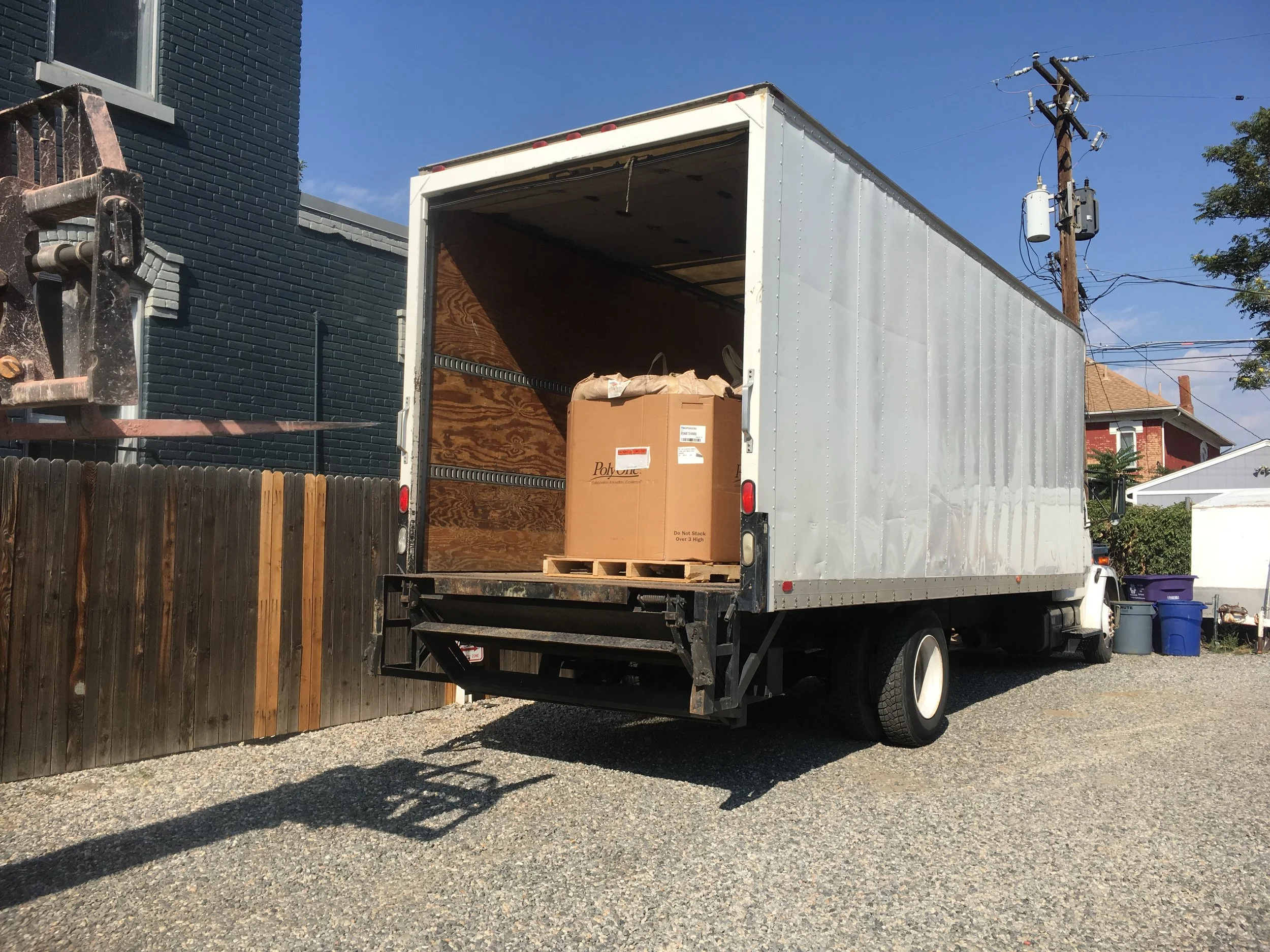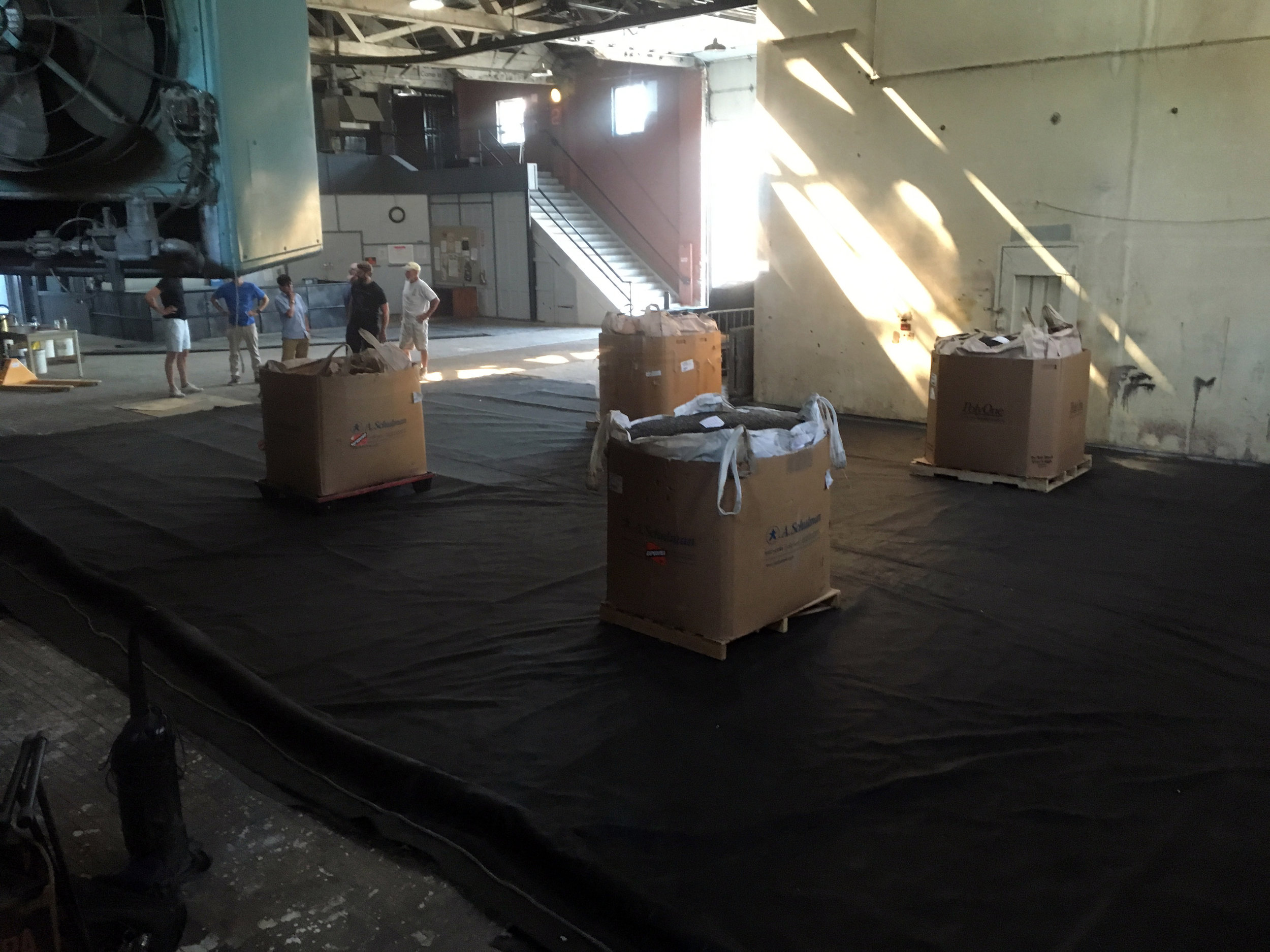University students wander through the artwork, each carrying a handful of pellets. (Image credit: Rosburg)
****
A SHORT ESSAY about Omega by Regan Rosburg
“The Interlocutors: Why Artists are Crucial in the Fight to Stop Climate Change”
*****
After reading the artwork’s mission statement, a mother carefully removed her shoes and socks, and waited patiently for her teenage son to do the same. He did so between gazes at his phone -- completely absorbed with his handheld device. Per the rules of the installation, the mother put her phone away and opened her palm to receive the roughly two tablespoons of tiny black pellets she was instructed to carry into the exhibit.
She looked at her son.
“Put away your phone,” she said.
Her son did not look up from the screen. The mother, exasperated, retrieved the phone from his hand and put it in her purse.
“You buy a bottle of Gatorade every day,” she said. “Own your part.”
Confused but captured, the young man opened his palm, received the pellets, and followed his mother into the vast warehouse. Far ahead of them, reaching up towards the light of three massive sunlit windows, loomed Omega.
***
I created Omega from various forms of plastic. It spirals in structure, reaching up and outward like a post-apocalyptic tree covered in pitch. The majority of the sculpture consists of black plastic wings cast from taxidermized goose and pheasant. These wings twist, bend, and arch in a posture of both growth and deflation. Black morning glory vines climb from the base to the top, dripping with shiny black plastic ooze. Crawling around the work are the molted husks of cicadas, their backs split open and empty, their claws gripping the plastic “trunk” of the sculpture.
In five places are pools of imagery and natural relics. Cupped by black wings, the painted images of grasses, seaweed pods, and flowers float in pools of solid clear resin. Fake meets real in each pool, where a 3-dimensionally painted jellyfish floats with bright red wasp nests. A coyote skull -- topped with a massive black wolf spider -- bisects another pool…its teeth jutting out from beneath. Children often see this skull first because it sits low to the ground.
The base of the sculpture is made of thicker wings that were poured directly from a local recycling plant. Thick and spindly ropes of black plastic – the leftover purges from the massive machine – reach and crawl out from the base of the sculpture. They dive and scatter out into the space of surrounding pellets.
Amongst the antlers, the flowers, the insects, and the dripping resin, a story unfolds that wraps back on itself like a mobia strip. Is this sculpture alive? Are the colorful pools full of newly adapted forms of growth? Are they proof of Life’s unstoppable potential to evolve from dead seas, oil-soaked beaches, and charred landscapes? Is it an uplifting sign of rebirth? Or a post-apocalyptic monument to the hubris of our species?
Finally, there are the nurdles.
Tiny virgin and recycled pellets, or “nurdles” as they are known in the industry, are the means of transporting plastic around the world so that it can be melted down into various products. They can often escape into the environment, threatening wildlife. I purposefully chose to use something this controversial because I wanted to make a point…. a rather colossal point.
You see, the sculpture is sitting in three and a half tons of these little black pellets -- roughly eighty-seven million of them. If one black pellet represents one plastic bottle, then Omega is sitting in eighty-seven million metaphorical bottles. This is an abstract number and thus an abstract concept. It becomes significant when one enters the space holding in their hand 200 metaphorical bottles (the average for an Americanto purchase in one year).
But when one’s foot touches the pellets in Omega, where eighty-seven million pellets only represent the number of bottles that will be purchased globally in the next seventy-three minutes, the experience moves past significant.
It becomes undeniable.
***
We are in the midst of overlapping, abstractly huge, relentless environmental deaths all around the world because of climate change. Every day we hear of more melting glaciers, rising seas, burning forests, extinguished species, and bleached coral. We also hear of doubt-seeding climate change deniers, or leaders who opt out of climate change treaties. All of this is damaging us. All are forms of death we cannot bury, and consequently cannot mourn. How does one have a funeral for habitat loss, let alone the death of our most treasured ideals and ethics?
When we cannot mourn something (via ceremony, symbol, or symbolic act) we enter a state of melancholia. When that loss is related to the Earth, it is considered environmental melancholia. In 2017, I published a paper which argues that the melancholia, if left festering, will be overrun by an unconscious attempt to find another focus. A melancholic person can become manic…meaning they will shop, drink, smoke, over-work, watch tv, or dive deeper into their devices. I call this behavior collective social mania.
Why is this so common, and yet so misunderstood? Think about it: we are all are encouraged to do this by advertisers, because a culture that is driven, encouraged, and addicted to consuming – and by that, I mean consuming everything: products, data, land, information, and entertainment -- is a culture that is numb, indebted, and controllable.
In the paper, I argue that our environmental melancholia and collective social mania are connected in a loop, and the loop is destroying the planet. We are horrified and saddened by what we see, so we check out… we consume. The more we consume, the more strain we put on the planet. The more strain we put on the planet, the more climate change happens. And on…and on….and on. My argument is that in order to stop the cycle, we must allow ourselves to reconnect to our evolved, inherent affinity for other living beings on the planet, something that E.O. Wilson calls biophilia.
When we love something, and it dies, we grieve its passing. We have a funeral. We burn a love letter. We release doves to symbolize a soul’s exit. Yet, with all of these simultaneous ecological “deaths” happening, how do we have a funeral? How do we break our gaze from our devices, and feel our surroundings again? How do have conversations about how painful it all is? How do we pause to reflect on our part in both the collapse, and the rebuilding? How do we allow ourselves to grieve this very unique and crucial time in the Earth’s history?
***
The docent who volunteered at the gate of Omega was the one to tell me the story of the mother and son that day. The pair apparently wandered around in the artwork for a long time, whispering to each other about what they saw. There were evidently long, silent pauses as the young man made the connection between his seemingly uneventful Gatorade purchase and the pellets that both spilled from his hand and stuck to the sweat of his bare feet. How overwhelmed he must have felt. How angry, perhaps… or determined? Saddened? Fearful? Responsible?
The amalgamation of all of these emotions is, in fact, the goal of Omega. If nothing else, the abstraction of numbers crystallizes into a tangible response…an emotion. With an artwork like this, the indisputable distance between one’s actions and one’s consequences dissolves. Distraction gives way to awareness, melancholia is replaced by mourning, and suddenly there is room for grief.
The more that individuals can utilize artistic symbolism as a way of experiencing their grief (and thus, their love for what has been lost) the more authentically they can connect with themselves, and then move towards meaningful, pragmatic changes of behavior in the face of overwhelming collapse. The goal, if there is one, is not to solve the world’s problems, but to first get individuals to confess that they hurt at all.
In the age of climate change, artists are not just helpful.
We are crucial.










